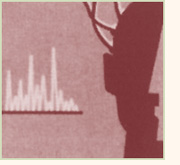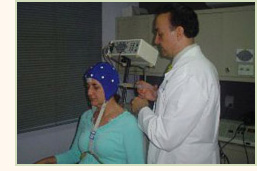 Otoencephalography DF All Specialties To Recover Your Hearing And Balance Health!
Otoencephalography DF All Specialties To Recover Your Hearing And Balance Health!
Otoencephalography with Cerebral Mapping
Tradicionalmente, las imágenes del mapeo cerebral se presentan como mapas computarizadas en relación a la actividad eléctrica cerebral, las cuales resultan muy atractivas a la vista del paciente común, sin tener otros resultados.
Traditionally, the images of the cerebral mapping are presented as computerized maps in relation to the cerebral electrical activity, which are very attractive in view of the common patient, without other results.
 Vertigo treatment. The electroencephalogram (EEG) is a study by which electrical impulses (the electrical activity) of the brain, which is called “brain waves” are measured. An EEG measures these waves through small button-shaped electrodes that are placed on the scalp and, thus, record the variations in the electrical potential of brain activity.
Vertigo treatment. The electroencephalogram (EEG) is a study by which electrical impulses (the electrical activity) of the brain, which is called “brain waves” are measured. An EEG measures these waves through small button-shaped electrodes that are placed on the scalp and, thus, record the variations in the electrical potential of brain activity.
The Digital Electroencephalogram is a study that has state-of-the-art technology, this study serves to view brain electrical activity.
This study is computerized, that is to say that it is realized with support of a computer and can be studied better from the computer since more exact measurements can be made.
Brain mapping is a tool used to view brain waves in the form of graphs and drawings, making it easier and didactic to visualize the result.
In our experience it has been found that 5% of the patient with vertigo is of central origin (at the cerebral cortex level).
The duration is variable, depending on the places where it is performed and has a variation of 25 to 45 minutes, since this way you can get more information from the patient.
In the case of the potentials to provoke an evoked potentials (VbEP) stimulation of the vestibular system that triggers the PEVest requires a strong stimulus of acceleration to the head, but of very short duration so that it can be considered an impulse.
It is performed:
Electroencephalographic mapping in 21 monopolar referral channels with binaural reference, with the patient at rest with closed eyes and in waking state.
Electroencephalographic mapping in 21 monopolar lead channels with binaural reference, under complex stimulation, hyperventilation, visual and auditory.
With absolute and relative power evaluation per channel. Z-Score of the patient with respect to the Data Bank.
Evoked potentials (VbEP) mapped in 8 shunt channels with a rotational stimulus in the form of a 240-grds / sec2 ramp to the right and left.
Otoencephalography with cerebral mapping.
 It is performed:
It is performed:
Electroencephalographic mapping in 21 monopolar referral channels with binaural reference, with the patient at rest with closed eyes and in waking state.
Electroencephalographic mapping in 21 monopolar lead channels with binaural reference, under complex stimulation, hyperventilation, visual and auditory.
With absolute and relative power evaluation per channel. Z-Score of the patient with respect to the Data Bank.
Evoked potentials (VbEP) mapped in 8 shunt channels with a rotational stimulus in the form of a 240-grds / sec2 ramp to the right and left.
Concert Your Appointment! We Are Ready To Meet You! Do It Now!
